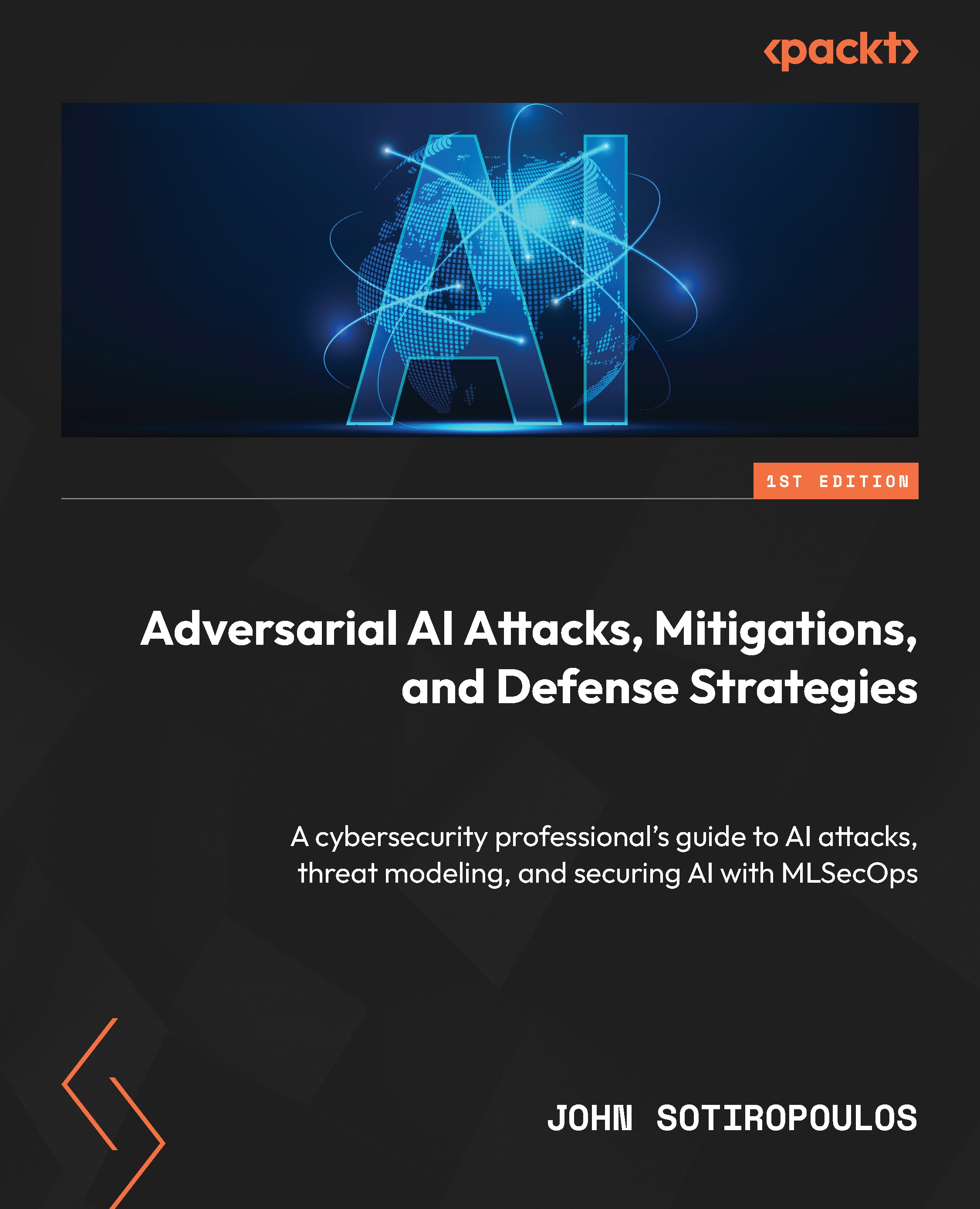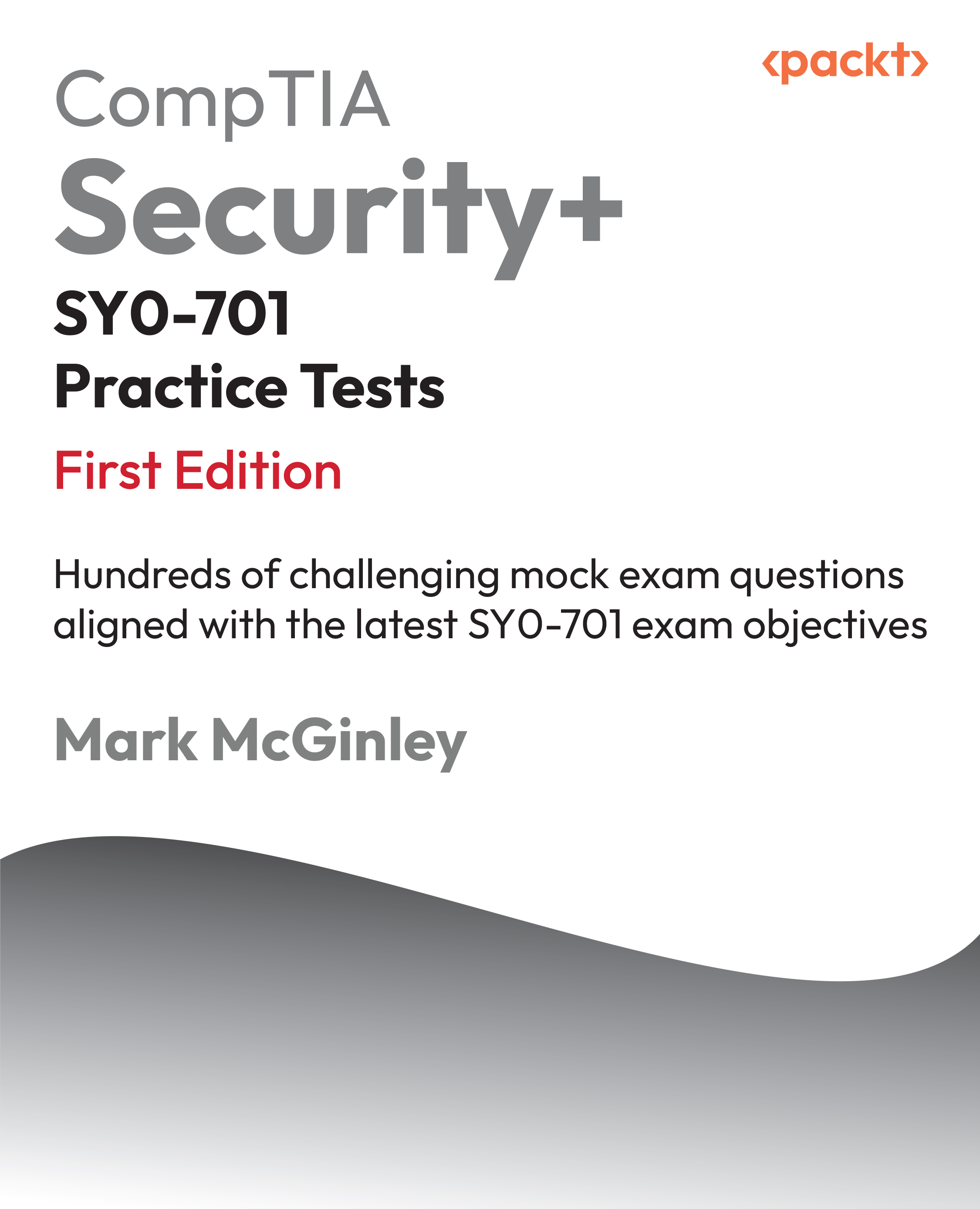-
Understand the unique security challenges presented by predictive and generative AI
-
Explore common adversarial attack strategies as well as emerging threats such as prompt injection
-
Mitigate the risks of attack on your AI system with threat modeling and secure-by-design methods
-
Purchase of the print or Kindle book includes a free PDF eBook
Adversarial attacks trick AI systems with malicious data, creating new security risks by exploiting how AI learns. This challenges cybersecurity as it forces us to defend against a whole new kind of threat. This book demystifies adversarial attacks and equips you with the skills to secure AI technologies, moving beyond research hype or business-as-usual activities.
This strategy-based book is a comprehensive guide to AI security, presenting you with a structured approach with practical examples to identify and counter adversarial attacks. In Part 1, you’ll touch on getting started with AI and learn about adversarial attacks, before Parts 2, 3 and 4 move through different adversarial attack methods, exploring how each type of attack is performed and how you can defend your AI system against it. Part 5 is dedicated to introducing secure-by-design AI strategy, including threat modeling and MLSecOps and consolidating recent research, industry standards and taxonomies such as OWASP and NIST. Finally, based on the classic NIST pillars, the book provides a blueprint for maturing enterprise AI security, discussing the role of AI security in safety and ethics as part of Trustworthy AI.
By the end of this book, you’ll be able to develop, deploy, and secure AI systems against the threat of adversarial attacks effectively.
This book tackles AI security from both angles - offense and defence. AI developers and engineers will learn how to create secure systems, while cybersecurity professionals, such as security architects, analysts, engineers, ethical hackers, penetration testers, and incident responders will discover methods to combat threats to AI and mitigate the risks posed by attackers. The book also provides a secure-by-design approach for leaders to build AI with security in mind.
To get the most out of this book, you’ll need a basic understanding of security, ML concepts, and Python.
-
Set up a playground to explore how adversarial attacks work
-
Discover how AI models can be poisoned and what you can do to prevent this
-
Learn about the use of trojan horses to tamper with and reprogram models
-
Understand supply chain risks
-
Examine how your models or data can be stolen in privacy attacks
-
See how GANs are weaponized for Deepfake creation and cyberattacks
-
Explore emerging LLM-specific attacks, such as prompt injection
-
Leverage DevSecOps, MLOps and MLSecOps to secure your AI system
 United States
United States
 Great Britain
Great Britain
 India
India
 Germany
Germany
 France
France
 Canada
Canada
 Russia
Russia
 Spain
Spain
 Brazil
Brazil
 Australia
Australia
 Singapore
Singapore
 Hungary
Hungary
 Ukraine
Ukraine
 Luxembourg
Luxembourg
 Estonia
Estonia
 Lithuania
Lithuania
 South Korea
South Korea
 Turkey
Turkey
 Switzerland
Switzerland
 Colombia
Colombia
 Taiwan
Taiwan
 Chile
Chile
 Norway
Norway
 Ecuador
Ecuador
 Indonesia
Indonesia
 New Zealand
New Zealand
 Cyprus
Cyprus
 Denmark
Denmark
 Finland
Finland
 Poland
Poland
 Malta
Malta
 Czechia
Czechia
 Austria
Austria
 Sweden
Sweden
 Italy
Italy
 Egypt
Egypt
 Belgium
Belgium
 Portugal
Portugal
 Slovenia
Slovenia
 Ireland
Ireland
 Romania
Romania
 Greece
Greece
 Argentina
Argentina
 Netherlands
Netherlands
 Bulgaria
Bulgaria
 Latvia
Latvia
 South Africa
South Africa
 Malaysia
Malaysia
 Japan
Japan
 Slovakia
Slovakia
 Philippines
Philippines
 Mexico
Mexico
 Thailand
Thailand











